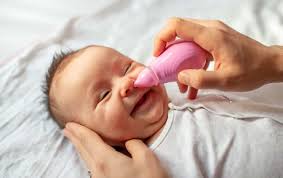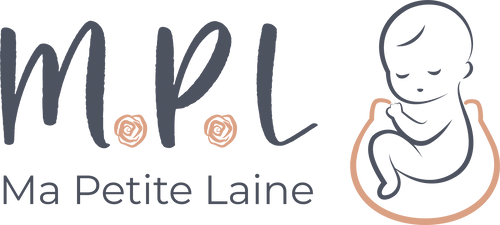When and how to blow baby's nose? answer from a physiotherapist
Blowing baby's nose: what you need to know by Agathe, physiotherapist
The recommendations won't be the same if you want to blow your baby's nose for daily ‘hygiene’ maintenance, if you want to blow your baby's nose for the start of a cold, or if you're thinking of going to hospital when you see your baby struggling to breathe.
Using pipettes of physiological saline is an excellent way: the most hygienic way because you don't need to wash/disinfect them.
Some parents are more comfortable with these tools, but they still require the use of physiological serum to moisten the nose, and will need to be disinfected daily.
The use of saline alone is sufficiently effective: 2 pipettes for a baby of a month or 2, then 3 to 5 pipettes depending on the severity of the cold. You should continue until the secretions are transparent. 2 to 3 times a day is enough. The most important time to blow the nose is in the morning, as the nose is often dry and needs to be moistened before it can be blown properly.

- For daily hygiene: a few drops of saline solution will be enough to moisten the nose. The advantage will be that baby will be used to blowing his nose for later episodes of colds, bronchitis or bronchiolitis.
- For exceptional blowing, with a baby who is not used to it, it is important to hold baby's head firmly so as not to injure the blood vessels in his nose when applying the saline solution.
From the age of 6 months, you can wash your baby's nose sitting down. The flexible syringes currently on sale are very good, but BE CAREFUL to disinfect them after use (introduce water from the kettle at least 2 times and leave to dry). Saline solution pipettes are an excellent way of avoiding superinfection.
If your child has bronchiolitis, read our article on how to soothe your baby during a bout of bronchiolitis.
|
For babies who are used to swallowing saline solution, you can place them on their back with their head on their side and insert the pipette into the nostril, facing the forehead, and empty it. You can then block the upper nostril to make blowing your nose easier. Then do the same with the other nostril. If the nose is green or yellow, repeat the procedure until the nose becomes clear. |
If you use a syringe, be sure to rinse it in boiling water afterwards and leave it to dry! This will prevent over-infection.
Here is a YouTube video that illustrates blowing the nose, which is not easy to do physically or psychologically, but is necessary before going to the emergency room, for example:
https://youtu.be/bfcmV7xRad4?si=6cSaUhY7u0uLp0_p
Discover the Ma Petite Laine birth cocoon:
Innovation for baby's sleep
Created by a paediatric physiotherapist, baby sleeps without flinching.

